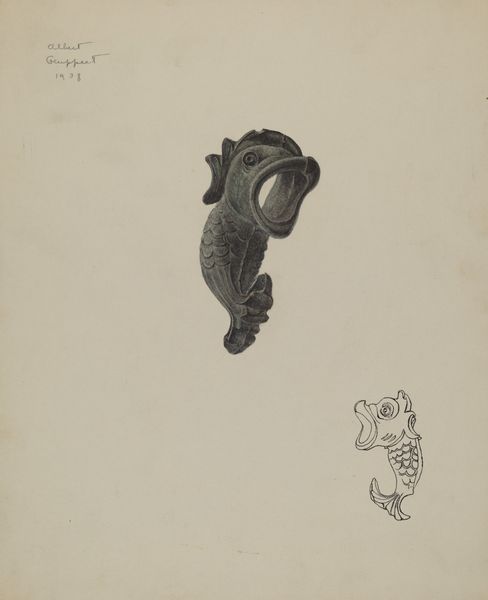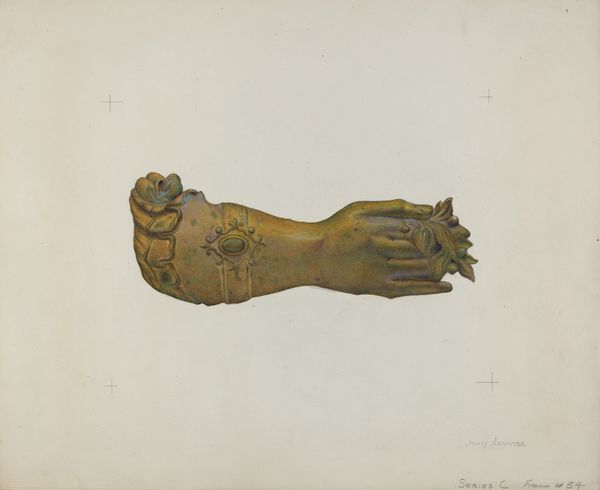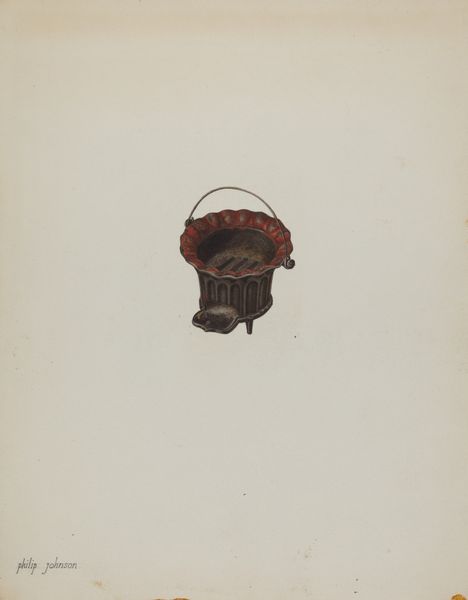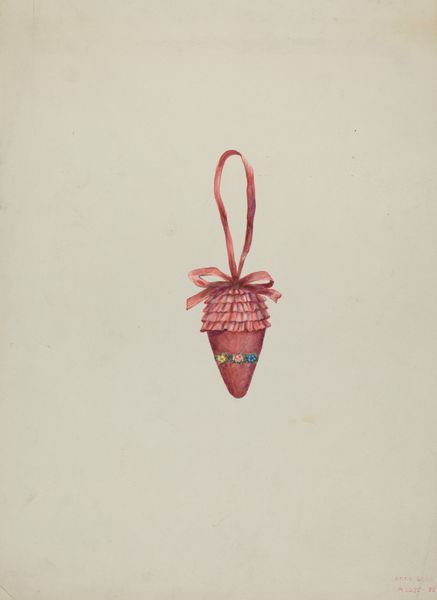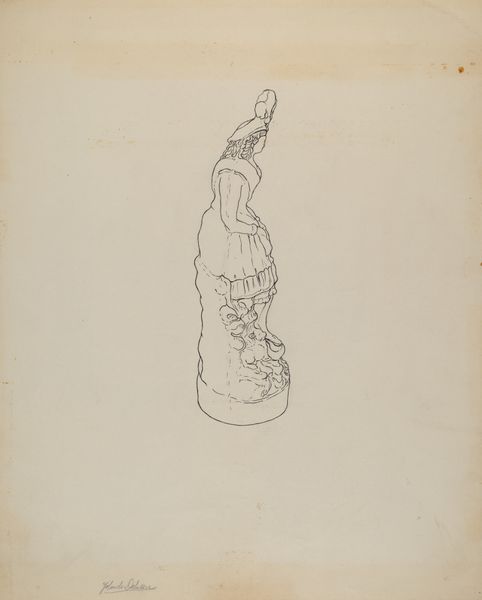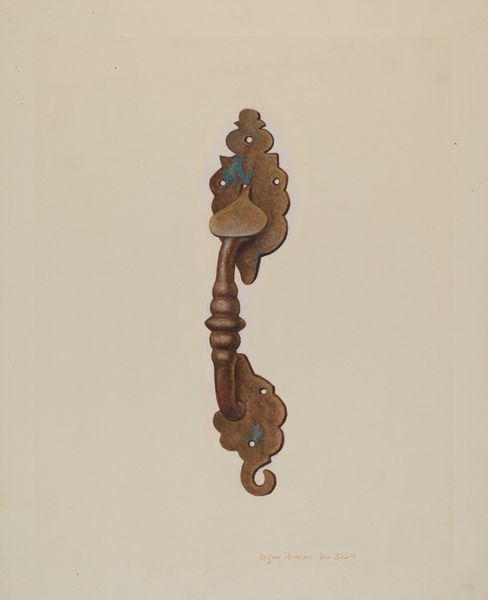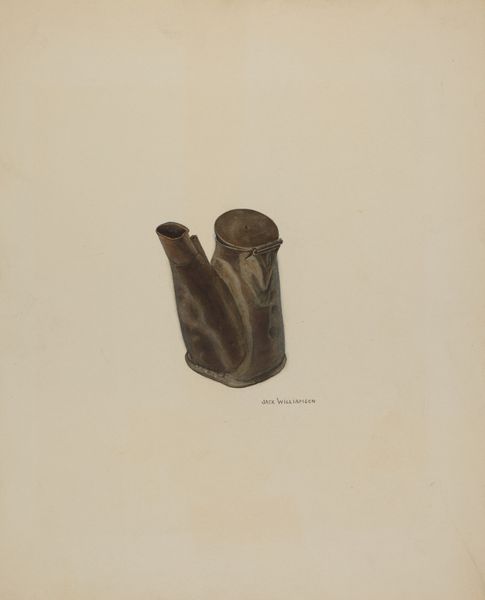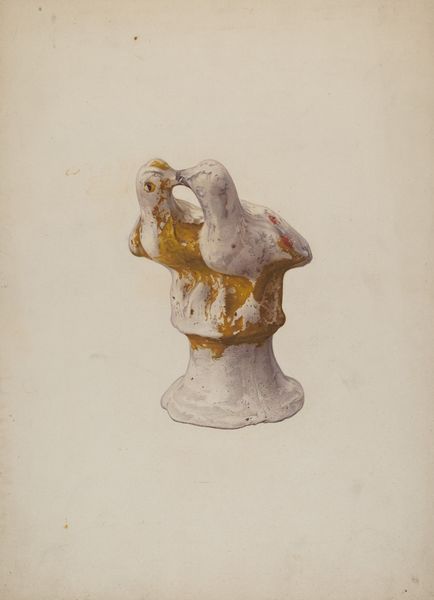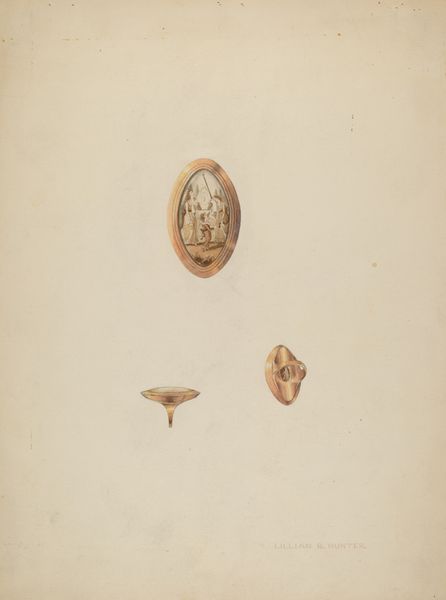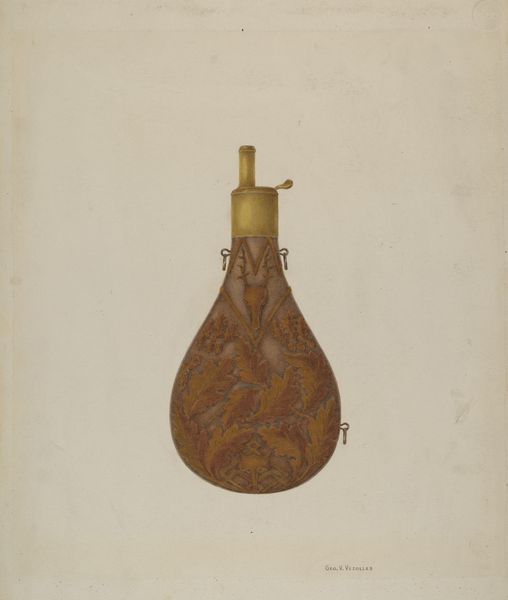
drawing, painting, watercolor
#
drawing
#
painting
#
watercolor
#
folk-art
#
watercolour illustration
Dimensions: overall: 29 x 22.9 cm (11 7/16 x 9 in.) Original IAD Object: 3 7/16" high
Copyright: National Gallery of Art: CC0 1.0
Curator: A slightly peculiar squirrel, wouldn't you say? It is rendered in watercolor and drawing with a folk-art quality, dating between 1935 and 1942. The piece is titled “Pa. German Squirrel Figurine” and is attributed to Arsen Maralian. Editor: It feels whimsical yet oddly melancholy. The muted tones and somewhat stiff pose give it a strange duality. Is that deliberate, do you think? Curator: The artist's careful consideration of form cannot be ignored, and he shows it through this subject of a popular folk art of that time period, where we can notice that these items were commonly found within the household. The artist’s composition here creates balance. Editor: Absolutely, one observes how the reddish color pops, directing our vision immediately towards the fruit in his hands and creating a sense of anticipation. The structure seems almost geometrically sound and is emphasized through value change to mimic that three-dimensionality of the figure in space, further illustrating the tension the figurine's existence brings forth: an idol of family? Decoration for visual harmony? Curator: We must recall, however, that pieces like these tell larger stories beyond mere decoration. How folk art in Pennsylvania German communities became almost synonymous with expressing cultural identity as a tool of resistance against increasing Anglo-American influence. Editor: Right. So it’s a figure laden with symbolic weight. It makes you consider who might have owned this figure. Why choose a squirrel, and a figure seemingly holding something akin to food or an offering? Curator: Indeed. In observing its execution—the almost reverential quality in its rendering, how the application of the watercolors meticulously traces light and shadow—Maralian may also want us to appreciate craft itself. Editor: I hadn’t considered that, but it definitely reframes how I see the artist engaging with art as object, art as meaning. Curator: These artistic exercises allow our present audiences to consider and learn more about our not too distant cultural experiences in American history. Editor: Yes, this is more than meets the eye! This piece has definitely granted us more depth and thought than the initial mood brought about.
Comments
No comments
Be the first to comment and join the conversation on the ultimate creative platform.

